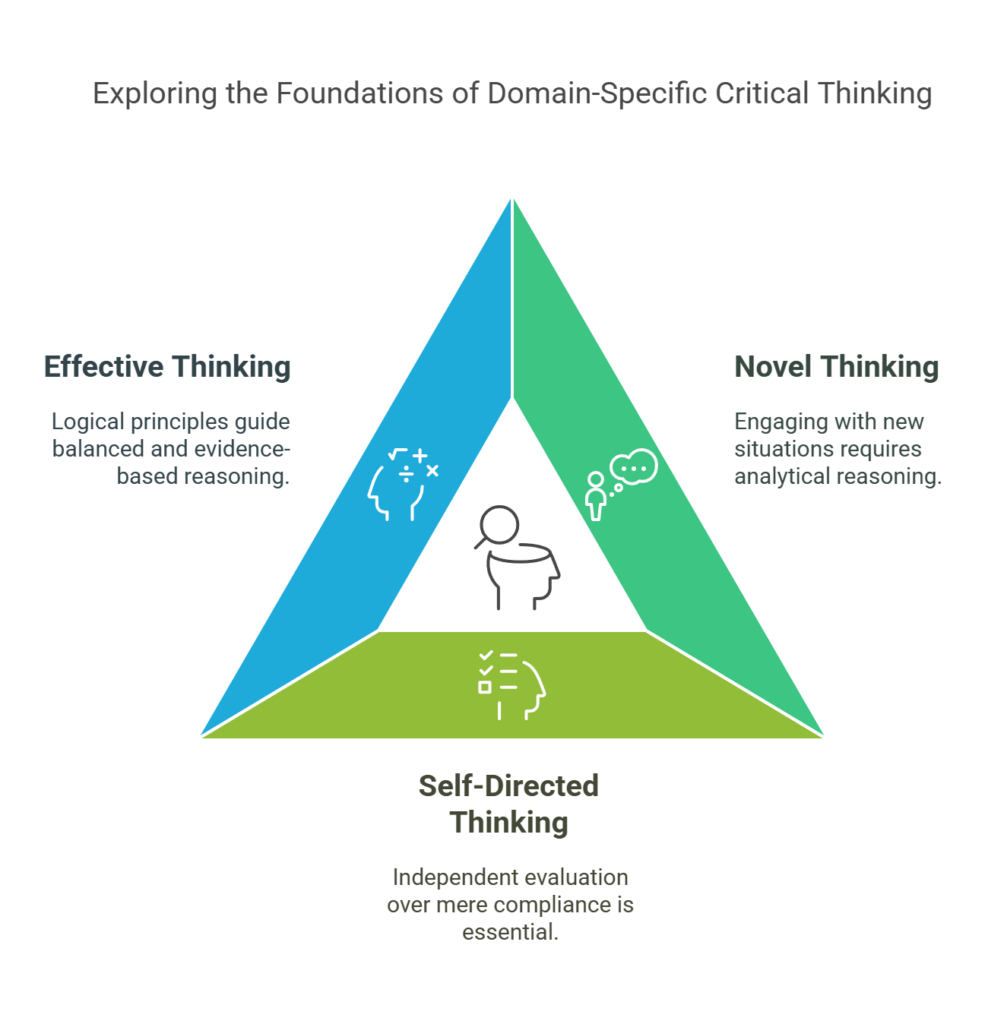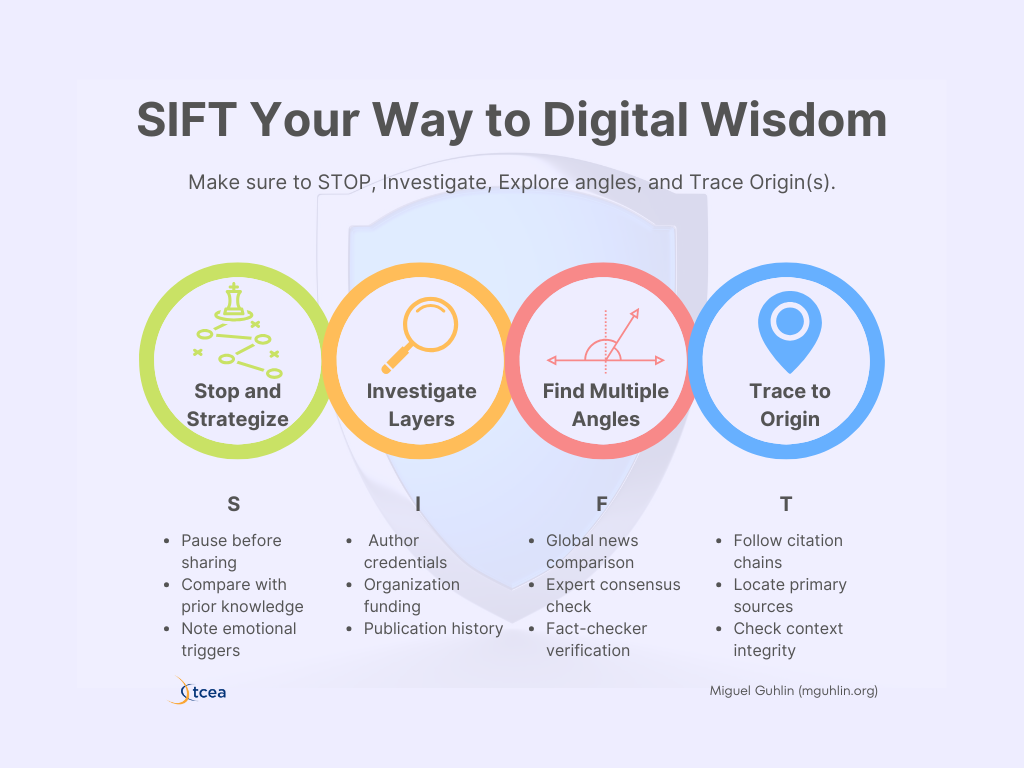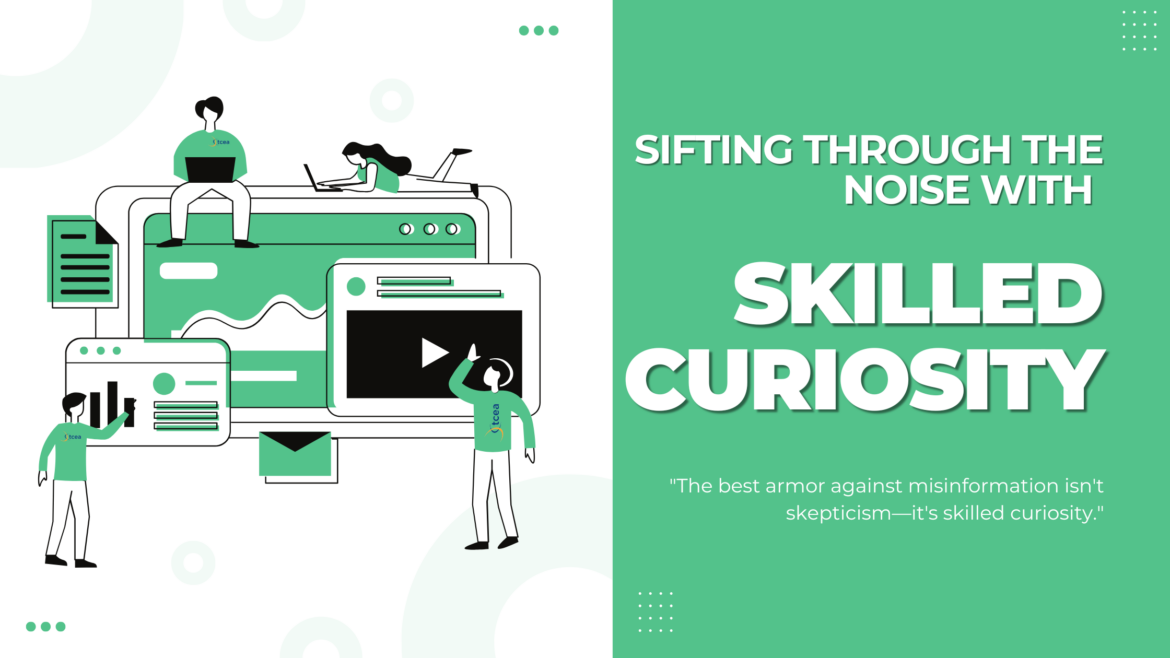“The illiterate of the 21st century will not be those who cannot read and write, but those who cannot learn, unlearn, and relearn.” – Alvin Toffler
This quote sets quite the stage, doesn’t it? So how can we deal with the current 24/7 information flood? Blend SIFT into your middle and high school student-oriented lessons. Let’s take a look at how to begin!

In the KirschnerED’s Science of Teaching Critical Thinking, Professor of Psychology Daniel T. Willingham is cited as offering three essential characteristics of critical thinking.
- Novel Thinking: Critical thinking occurs when a person encounters a situation that is new and unfamiliar, requiring them to analyze and reason rather than recall and use past solutions.
- Self-Directed Thinking: A person is thinking critically when they independently evaluate a situation rather than simply following instructions.
- Effective Thinking: For thinking to be considered critical, it must be guided by logical principles, such as considering both sides of an issue, evaluating evidence, and separating emotion from reason.
Like a three legged stool, you can encounter difficulty without one of these characteristics.
Four Essential Steps to Build Critical Thinkers
With those characteristics in mind, and the admonition that critical thinking is specific to a domain (e.g. requires background knowledge in a discipline of study), how do you systematically develop digital literacy skills across subjects? Here are four steps (research-backed approach) you can take:
- Skill Identification
Example: In social studies, focus on identifying author bias. In science, prioritize tracing research sources. - Content Pairing
Pair “Investigate the Source” with primary document analysis in history classes. - Progressive Complexity
Start with verifying meme sources in 6th grade, progress to analyzing AI-generated content by 12th grade. - Cross-Curricular Reinforcement
Science teachers reinforce “Trace Claims” through lab report citations while English teachers apply it to literary criticism.
But what might this look like in the classroom?

Try out Miguel Guhlin’s Skeptical Thinking Evaluator (refreshed in 2025), a ChatGPT powered tool to assist you in developing critical thinking and analyzing claims. It’s free and may be of use. Remember, you shouldn’t use Custom GPTs like this one with under 13 year olds.
Classroom-Ready SIFT Activities
Middle School Social Studies: Historical Fact-Checking
Activity: Cold War Headline Analysis
- Why This Works:
Develops media literacy through comparative analysis of 1950s newspaper coverage versus declassified documents. - Implementation:
- Provide Pravda and NY Times articles about the 1962 Cuban Missile Crisis
- Students use SIFT framework to:
- Identify governmental influences on reporting
- Trace casualty figures to original military reports
- Compare with modern historical analyses
Tech Enhancement:
Use Newsela’s Text Sets to access differentiated primary sources and build customized comparison dashboards.

High School Science: Climate Change Debates
Activity: Global Warming Evidence Trace
Why This Works:
Teaches students to distinguish between scientific consensus and manufactured controversy.
Implementation:
- Analyze a viral climate change denial meme
- Guide students to:
- Investigate original IPCC report citations
- Find counter-arguments from peer-reviewed journals
- Create evidence maps showing scientific agreement levels

Tech Enhancement:
Google Scholar Alerts track evolving research, while Hypothesis.is enables collaborative source annotation.
Did You Know about Be Informed?
Students assess the impact social media has on the fact-based information necessary for effective participation in a democracy. Using video from A Citizen’s Guide to Preserving Democracy and writing activities, students explore the challenges in addressing misinformation and disinformation that younger Americans encounter online. Students conclude by discussing the connections between trustworthy information and a thriving democracy. Watch video on teens fact-checking Tik Toks.
Why This Approach Works
You may be wondering why this approach works. It relies on a variety of high-effect sized instructional strategies.
- Brain-Based Learning
Spaced repetition through cross-grade reinforcement strengthens neural pathways. - Real-World Relevance
TikTok fact-checking exercises increase engagement (source) compared to textbook drills. - Skill Transfer
Students using approaches like SIFT show 34% improvement (source) in identifying phishing emails versus control groups

The Best Armor
“The best armor against misinformation isn’t skepticism—it’s skilled curiosity.”
Use the SIFT Method in the context of classroom activities to encourage skilled curiosity.

